VIII International Exposition of Preserves in Parma, 1953
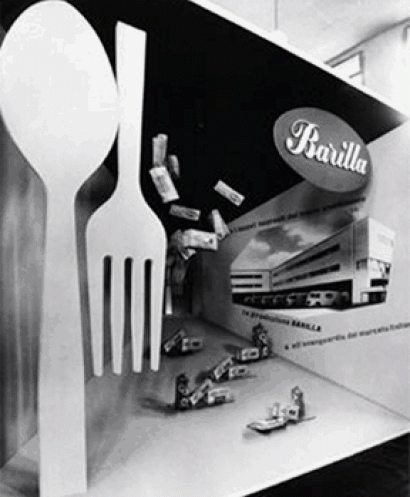
Parma, VIII International Exposition of Preserves and packaging – 3rd Food Exhibition. 12-25 September 1953.
Twenty years have passed from the participation of Barilla in the II Wheat Roman exhibition. The principles of expositional strategy were deeply changed, and this time the setting up of a wall didn’t have anything to do with the advertising of a product, for this purpose a real pavilion was organized, an open space free from the rigidity of a building cover.
In fact, it is a structure we could define as “aerial”, if we take into account the lack of heavy elements that contribute to create the formal features of the composition (1).
The creative idea of the project is based on the modular positioning of five lamellar portals that allow the anchorage of a long parallelepiped to thin piers linked to the ground by two transversal beams.
The intention of the designer – the architect from Parma Erberto Carboni, who was employed during the Fifties to redesign the Company image of the pasta plant – results clear. He was establishing through the use of extremely light building elements, an advertising setup characterized by a peculiar perspective effect, determined by the grout line of the portals that sustain the image of the phase of manufacturing of Barilla products, visible from eye level. The game of the “holes” that opens wide vision lines in all directions is determined by the clear prevalence of the empty spaces on the full ones.
Besides, the architecture of this very original stand is integrated by funny chromatic choices that give particular emphasis to the various compositional elements and so is the positioning of the lights, skillfully hidden by light wooden creases in soft protrusion from the ground plane.
In one of the extremities there is a high prism in which the cavity, formed by four facades, determines as it was a small theatre, a space game of great scenographic effect. In the foreground there are two gigantic kitchen items: the spoon and the fork that function as screen for the illumination sources.The cutlery – privileged subject of the advertising campaign of 1952, are proposed again with an embossed effect on the extremities side, making a composition that includes the “Golden eggs hen”, advertising poster from 1953.
The Barilla brand, which emerges on an oval panel, projects on the sloped walls a sequence of lights and shadows that seem to increase the illusion of an endless space.
The perspective depth of this peculiar small theater highlights the presence of new pasta boxes, attached to thin nylon strands or positioned on a plan in a right slope just like the boards of a stage (2).
Medardo Monica, expert artisan from Parma, was the material executor of the project and he had already worked on the furniture of Barilla offices in 1933 and he would realize, during the whole decade, on the project designed by Erberto Carboni, the expositional stands for the Food Preserves Fair of Parma, forerunner of the nowadays “Cibus”.
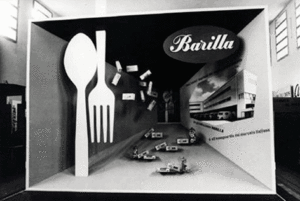
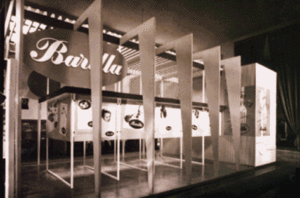
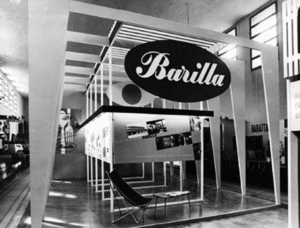
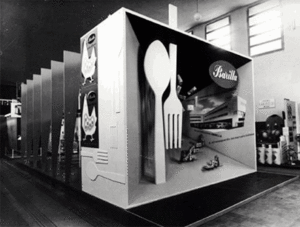
1) BAYER Herbert, Progettazione di Esposizioni, in Erberto Carboni. Milano, Electa, 1985. p 153.
2) CARBONI Erberto, Progetto esecutivo Stand Barilla 1952. ASB, O, Cartella Fiere, 1952; Foto: Aa 306, 307, 309, 310; Modellino di ricostruzione, Istituto d’Arte “P. Toschi”, Parma.